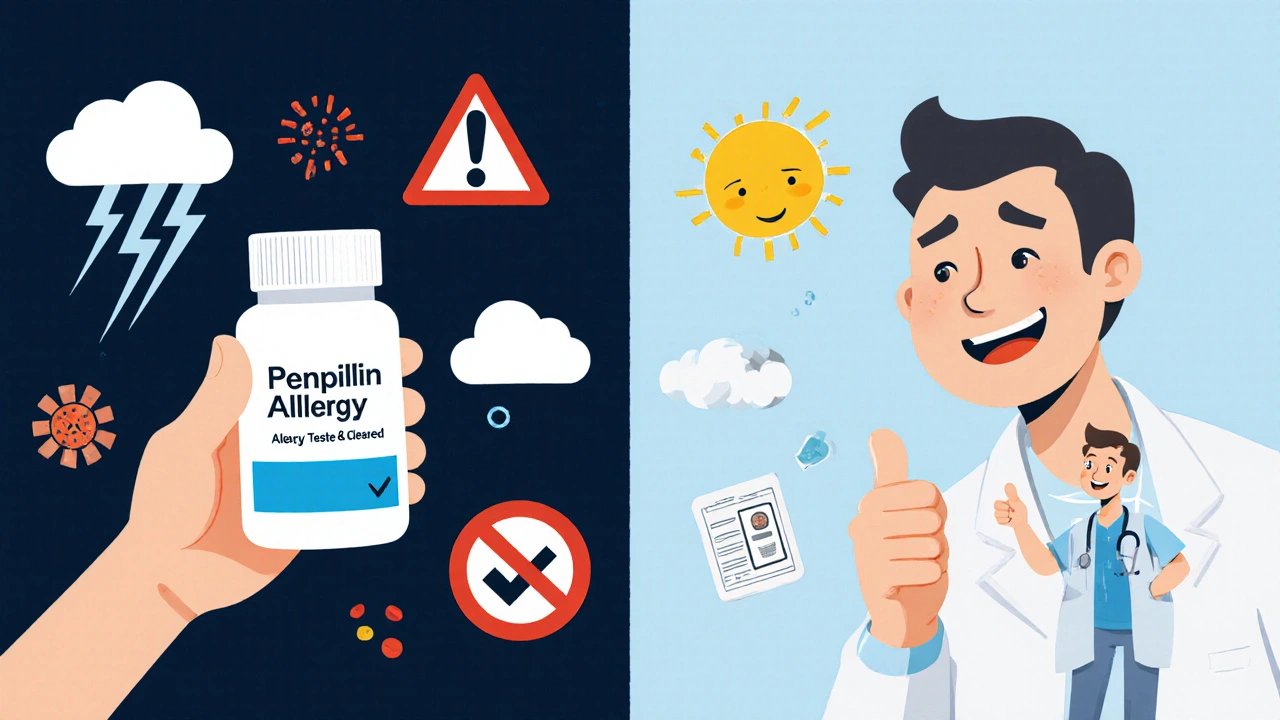When someone says they have a true penicillin allergy, a confirmed immune system reaction to penicillin antibiotics that can cause severe symptoms like anaphylaxis. Also known as penicillin hypersensitivity, it’s one of the most commonly reported drug allergies—but also one of the most often mistaken. Many people think they’re allergic because they had a rash as a kid, or their mom said they couldn’t take penicillin. But studies show over 90% of people who believe they have a true penicillin allergy don’t actually have one. That’s not just a small error—it’s a big problem for your health.
Why does this matter? If you’re wrongly labeled allergic, doctors avoid the safest, cheapest, and often most effective antibiotics. Instead, they give you broader-spectrum drugs like vancomycin or fluoroquinolones, which cost more, have worse side effects, and increase your risk of antibiotic-resistant infections. A true penicillin allergy, a specific IgE-mediated immune response triggered by penicillin or its breakdown products can cause hives, swelling, trouble breathing, or even life-threatening shock. But a mild rash? That’s often just a viral reaction or non-allergic side effect. Only a proper skin test or graded oral challenge can confirm a true allergy.
And it’s not just about penicillin itself. If you have a confirmed true penicillin allergy, you may also react to related antibiotics like amoxicillin, ampicillin, or even some cephalosporins. But here’s the catch: many of those cross-reactions are rare. Doctors used to avoid all beta-lactam antibiotics if you were allergic to penicillin. Now, we know better. With testing, most people can safely take other antibiotics—even ones in the same class. That’s why getting tested isn’t just about avoiding risk—it’s about opening up better, safer treatment options.
If you’ve been told you’re allergic to penicillin, ask: When did it happen? What exactly happened? Did you ever get tested? If you’re not sure, or if it was years ago, you might be avoiding a drug you could actually tolerate. Many clinics now offer penicillin allergy evaluations—simple, quick, and often covered by insurance. It’s not just about what you can’t take. It’s about what you can.
Below, you’ll find real-world guides on how allergies affect medication choices, how to spot real reactions versus side effects, and what alternatives work when penicillin isn’t an option. These aren’t theoretical articles—they’re practical tools from people who’ve been there. Whether you’re managing your own health or helping someone else, this collection gives you the facts you need to ask the right questions and get the right care.
Posted by
Jenny Garner
11 Comments

Most people think they're allergic to penicillin, but less than 1% actually are. Learn the difference between true allergies and common side effects - and why mislabeling can cost you more than just a rash.
read more